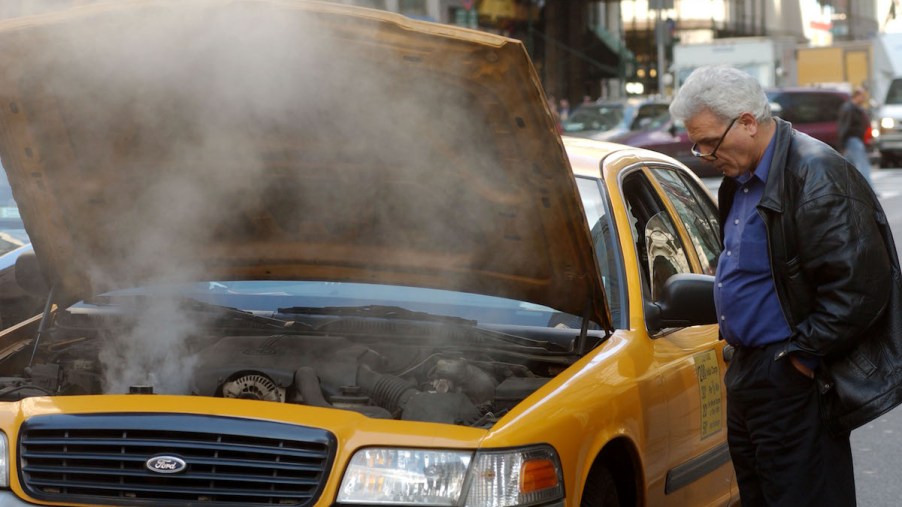
Why do Cars Overheat?
Your vehicle’s engine runs at 210 degrees Fahrenheit (99 degrees Celsius). To make that happen, there’s a cooling system to keep the engine from overheating.
Maybe you’ve noticed steam rising from under the hood. Perhaps the temperature gauge on your dashboard is showing an “H” reading in the red or the heat sensor is on. If so, you may want to take a closer look at the cooling system before expensive repairs are necessary.
It’s important to know how the cooling system works and what signs may mean your vehicle is overheating.
The cooling system
According to Carfax, the cooling system operates as a pressurized closed loop. Leaks or loss of pressure can keep it from doing its job and causing the engine’s temperature to climb.
The coolant used in the engine is 50% water and 50% antifreeze in liquid form. The antifreeze does what the name suggests and keeps the coolant from freezing in winter temperatures. The coolant gets pumped through the heated engine first before it cycles through the radiator where it’s cooled down by fresh air. The process lets the coolant gather heat from the engine again on its next cycle through the system.
When the cooling system fails to do its job for any reason, the heat situation will trigger a dashboard warning on recent models. On older vehicles, the temperature gauge will show the needle in the red with “H” for hot. If that happens, or you notice steam rising from under the hood, pull the vehicle safely off the road and investigate the issue.
Reasons vehicles overheat
The good news is that there can be many reasons that your vehicle’s engine is overheating. Some of them are simple and inexpensive fixes if caught early.
Coolant level
Checking the level of coolant in the overflow tank periodically is a good idea. If you’re low on coolant, the engine could overheat. Adding coolant can solve the problem but keep an eye out for other issues like leaks.
Engine fan
The engine fan runs when needed to draw outside air through the radiator for sufficient cooling. A faulty engine fan can be the result of a broken motor or switch. If the fan is belt-driven, the belt might be the culprit.
Exhaust system clogs
If the catalytic converter or another system component gets restricted or blocked in any way, exhaust gas can’t be expelled as it needs to be.
Leaks
Coolant on the ground where the vehicle is parked might be a good indication of leaks. You might also see coolant on the engine. The leak could be coming from the radiator, a hose, the heater core, the engine block, the head gasket, or the overflow tank. When leaks are identified, repairs should be made as soon as possible.
Radiator cap
The cap needs to be tightly in place for the system to remain pressurized. Ensure the radiator cap is tight and not broken or defective.
Radiator clogs
Corrosion, debris, and grime from old coolant can cause clogs in the radiator. If the clogs are minor, cleaning will clear it up. Otherwise, the radiator may need to be replaced.
Thermostat
If the thermostat is stuck in a “closed” position, the coolant might not be circulating through the radiator.
Water pump or belt
If the water pump or the belt that runs it fails, seepage and leaks result and the system can’t do its job.
System overload
Towing or hauling can cause overheating situations.
What to do and getting help
If you become aware your vehicle is overheating, try to get it off the road right away. If necessary, tow it as opposed to running it with the engine hot.
Turn off the engine once you’ve reached a safe location. Wait until the car is completely cool before trying to open the hood to prevent injury. Check the coolant and the radiator cap once it has cooled off. Check the lower and upper radiator hoses, as well as other heater hoses, aren’t blocked, broken, or disconnected.
Turn the engine back on and carefully monitor the temperature gauge or sensors. If it begins overheating again, pull off immediately in a safe location and turn off the engine. Investigate to find the issue, or seek the help of a trained mechanic or technician, and have repairs made immediately.


